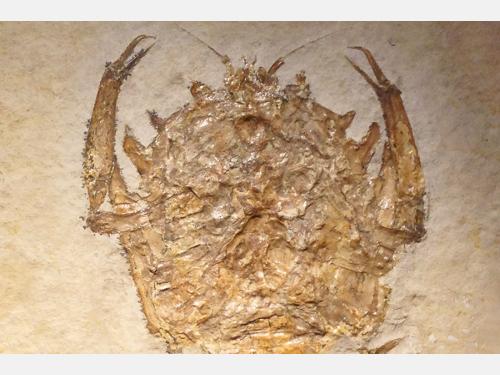National Fossil Day (Free Virtual Family Event)
By
Harvard Museums of Science & Culture and Harvard Museum of Natural History
Free

Celebrate National Fossil Day with the Harvard Museum of Natural History! Bring the whole family to learn about the museum's incredible fossils over Zoom.
Sign-up Information
- Ages: 3 to 12.
Registration required
- Sign-up is ongoing
Cost
This Event is free!
Location
- Only virtual (online or over the phone).
Dates and Times
Wed, October 13 2021 9:30AM – 10:30AMWed, October 13 2021 3:30PM – 4:30PM
Additional information
Have you ever wondered what it is like to be a paleontologist? Celebrate National Fossil Day—an event organized by the National Park Service—with Harvard paleontologists! Take a close look at museum fossils and learn how they are used to help solve mysteries about ancient life. What amazing creatures lived together in ancient oceans? How do fossil tracks, traces, and burrows help us understand how extinct animals lived? How can we reconstruct an animal from just its bones? How did dinosaurs get so big? Bring your curiosity and questions to this online event for kids and families!
Program Schedule
9:30–10:30 am ET: Meet RJ Knecht, Mark Renczkowski, and Peter Bishop
Get a behind-the-scenes peek at the paleontology collection with graduate student RJ Knecht and curatorial assistant Mark Renczkowski as they uncover how fossil tracks, traces, and burrows help us understand how extinct animals lived. Then, meet postdoctoral fellow Peter Bishop and explore how we “rebuild” extinct dinosaurs and mammals just from clues in their bones.
3:30–4:30 pm: Meet Karma Nanglu and Meg Whitney
Meet postdoctoral fellow Karma Nanglu and learn how amazing creatures like trilobites and marine worms lived together in ancient ecosystems half a billion years ago. Then, join postdoctoral fellow Meg Whitney to investigate how dinosaurs were able to grow so big and what it is like to be a paleontologist!
Free

Wed, October 13 2021 9:30AM – 10:30AMWed, October 13 2021 3:30PM – 4:30PM
Share with your friends!
Is there anything wrong or outdated? Please let Find It Cambridge know!
Last updated September 24, 2021.